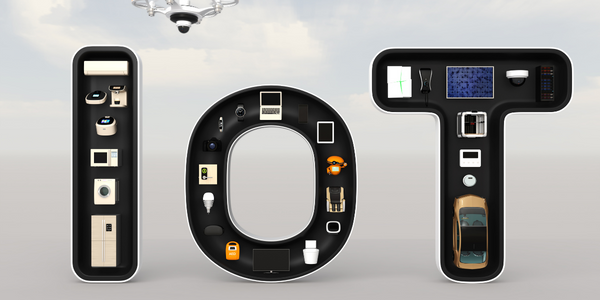Provide a Flexible Solution to Suit a Service-Based Architecture and Scale With a Rapidly Growing Business

Customer Company Size
Large Corporate
Country
- United States
Product
- Datadog
- PagerDuty
- Amazon Web Services
- Relational Database Service (RDS)
Tech Stack
- Amazon Web Services
- Relational Database Service (RDS)
Implementation Scale
- Enterprise-wide Deployment
Impact Metrics
- Productivity Improvements
- Customer Satisfaction
Technology Category
- Infrastructure as a Service (IaaS) - Cloud Computing
- Infrastructure as a Service (IaaS) - Cloud Databases
Applicable Functions
- Business Operation
Use Cases
- Infrastructure Inspection
- Remote Collaboration
Services
- Cloud Planning, Design & Implementation Services
- System Integration
About The Customer
Airbnb is a leading community-driven hospitality company where people can list, discover, and book unique accommodations around the world. The company offers a platform for travelers to book accommodations in more than 34,000 cities in 190 countries. Airbnb connects people to unique travel experiences, whether they want an apartment for a night, a castle for a week, or a villa for a month. The company is known for its inviting website and world-class customer service, making it the easiest way for people to monetize their spare space and showcase it to an audience of millions.
The Challenge
Airbnb, a leading community-driven hospitality company, faced the challenge of maintaining the reliability of their services while adapting quickly to new business opportunities. They developed a service-based architecture for some components of the site, while other components continued to be part of their main application. Separate engineering teams were created to support the separate components and features. Over time, they added many different systems for monitoring, some reporting to the central dashboard application, others being more standalone. This approach became difficult to scale, leading them to look for a comprehensive and more holistic operations performance solution.
The Solution
Airbnb decided to standardize their systems as they scaled their customer base and infrastructure. They chose to implement Datadog and PagerDuty, as these tools provided comprehensive monitoring, reliable alerting, and on-call management, and could also be customized to enhance their ease-of-use and effectiveness. The published APIs made it easy for engineers to write their own plugins and integrate these into the combined system. Airbnb was able to collect and correlate metrics from 15 different systems into Datadog dashboards, and then aggregate incidents from any system in PagerDuty and notify the right person at the right time. This helped them reduce the time it takes to act on and ultimately resolve critical issues.
Operational Impact
Quantitative Benefit

Case Study missing?
Start adding your own!
Register with your work email and create a new case study profile for your business.
Related Case Studies.

Case Study
Premium Appliance Producer Innovates with Internet of Everything
Sub-Zero faced the largest product launch in the company’s history:It wanted to launch 60 new products as scheduled while simultaneously opening a new “greenfield” production facility, yet still adhering to stringent quality requirements and manage issues from new supply-chain partners. A the same time, it wanted to increase staff productivity time and collaboration while reducing travel and costs.

Case Study
Aerospace & Defense Case Study Airbus
For the development of its new wide-body aircraft, Airbus needed to ensure quality and consistency across all internal and external stakeholders. Airbus had many challenges including a very aggressive development schedule and the need to ramp up production quickly to satisfy their delivery commitments. The lack of communication extended design time and introduced errors that drove up costs.

Case Study
Porsche Announces Augmented Reality at Scale, Powered by Atheer
The usual practice for car repairs at a Porsche car dealership is to have a factory representative or regional engineer visit to help diagnose the problem, and sometimes a faulty assembly is shipped back to company HQ for damage analysis. All that costs time and money for customers and dealers alike.

Case Study
Covisint Improves Mitsubishi's Collaboration With Its Supply Chain
Mitsubishi sought to improve supplier relationships on a global basis and to offer an easy-to-use solution to interact with them. In August 2004, Mitsubishi selected Covisint’s platform to help improve sharing of information and collaborative business processes with its global suppliers. Covisint enabled Mitsubishi to provide its suppliers with immediate access to information and applications to obtain more collaborative working relationships

Case Study
Beer Distributor Improves Security, Shipping Capacity, and Service
Enjoy a beer on the upper Texas Gulf Coast, and you can probably thank Del Papa Distributing Company. Founded more than a century ago, the company today distributes 10 million cases of beer annually, from 30 suppliers. More than 375 employees work at headquarters in Texas City and two other distribution centers. The family-owned company has a simple aim: to be a great beer distribution company. So when Del Papa set out to build a new 27-acre headquarters, company leaders thought about how technology could contribute to its greatness. “We wanted the new distribution center to have a single, secure network we could use for physical security, communications, collaboration, and even monitoring the temperature of our inventory,” says Steve Holtsclaw, Manager of Information Systems for Del Papa. The old building, in contrast, had separate networks for voice, data, video, and physical security. Separate networks were expensive and got in the way of business. For example, personnel could only monitor video surveillance cameras from certain workstations. And Wi-Fi performance in the warehouse area wasn’t reliable enough for the voice-activated order-picking system.

Case Study
Aruba Cuts the Core with Microsoft Lync
Aruba's IT team purchased a telephony system which is going end-of-life and this would become a bottleneck to growth. While they began investigating modern PBX systems, they were also considering put their own Wi-Fi infrastructure to work by adopting a Unified Communications and Collaboration solution.






